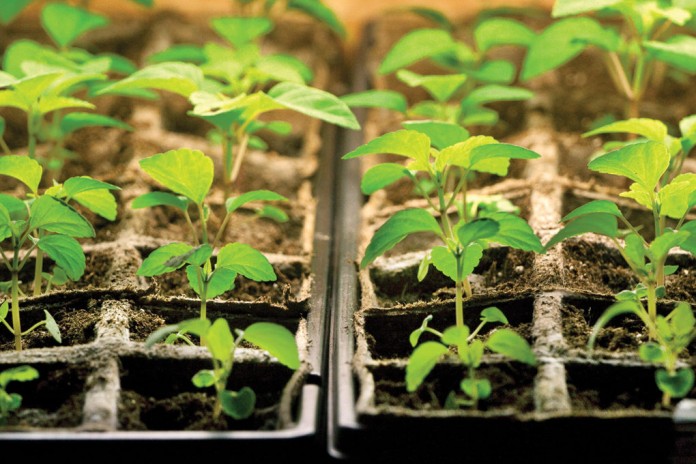It doesn’t feel like it yet, but spring is just around the corner. Soon it will be time to shed the extra layers and bust out the T-Shirts and start gardening!
If you’re anxious to start your garden now, you can always start your seeds indoors. Seed starting allows you to get a head start on your growing season while saving you the money and time from going to a greenhouse.
Sometimes starting and growing seedlings indoors can be a challenge, but success can be yours. Start by making a list of the plants you want to grow this season, but be careful not to bite off more than you can chew.
Plan ahead
Remember, these plants will eventually be a lot bigger than they are in the seed packet, so make sure you will have enough garden space for them when it comes time to transplant them. Spacing is important in the garden; don’t try to pack a ton of plants together. I know it’s exciting, but don’t get too antsy and plant way too far in advance.
Most seed packets suggest planting indoors 6-8 weeks before the last frost, so know when the last frost date for your area. Some seeds require special treatment before being planted, such as scarification, stratification or soaking.
Don’t get so caught up in planting that you forget to do these steps if necessary. These instructions can be found on the seed packet. Choosing a container to plant in is one of the more relaxed steps in the seed starting process because you can plant in just about anything.
Store bought seeding flats are always an option or you can go a DIY route and use household items instead. Empty toilet paper rolls, folded newspapers, and even eggshells can be used.
Be creative. Whatever container you choose, make sure it’s clean and has drainage holes. Nobody likes a drowned seeding.
Potting mix
You can fill your containers with potting mix made for seedlings. It’s best not to use your garden soil because it can harbor weed seeds and diseases that will threaten your tiny seedling. If you want to continue on the DIY route, you can certainly make your own potting mix.
There are a lot of different recipes available but most contain the same basic ingredients: vermiculite, perlite and peat. Finally, it’s time to plant. Read the seed packet to find out how deep to plant the seeds.
Most seeds that you will be starting indoors can just be pressed lightly into the soil. Now would be a good time to label each cell with what you planted, so you aren’t stuck guessing in a few weeks. Plant a few seeds in each cell just in case one of the seeds don’t germinate. If more than one seed ends up germinating, just snip the weaker one.
New seedlings are very finicky and like a lot of attention, so make sure you keep the soil moist at all times. If you don’t trust yourself enough to remember to water on a regular basis, you can always set up a self-watering system where the plants soak up water from an external container as needed.
You can buy a self-watering system or make one at home. Your new seedlings also like a lot of light. If they aren’t getting enough light they will reach for more and their stems will get really tall and thin.
Weak plants
This just makes the plants weak. Avoid this by using artificial lights. Grow lights should be placed directly above the seedlings, only 2-3 inches above them. Set up your grow light system to be adjustable so as your plants grow you can raise your lights.
Everything needs sleep, so mimic natural light by turning off your grow lights after 12-15 hours a day to let your plants rest. Last but not least, you have to send your sprouts to boot camp to get them ready for the real world.
Since they’ve been pampered inside, they aren’t strong enough to survive outside. A stiff breeze would be enough to put an end to all of your hard work. So about a week before you are ready to transplant your seedlings outside start to acclimate them to the harsher conditions they will soon be living in.
Set them outside for a few hours each day to prepare them for the sun and wind. This is the moment we’ve all been waiting for! Transplant time! The hard work isn’t over yet though, you still need to pay close attention to your plants.
Keep your garden clean, free of pests and make sure your plants are watered. Keep your plants happy and they will return the favor. Happy gardening!













